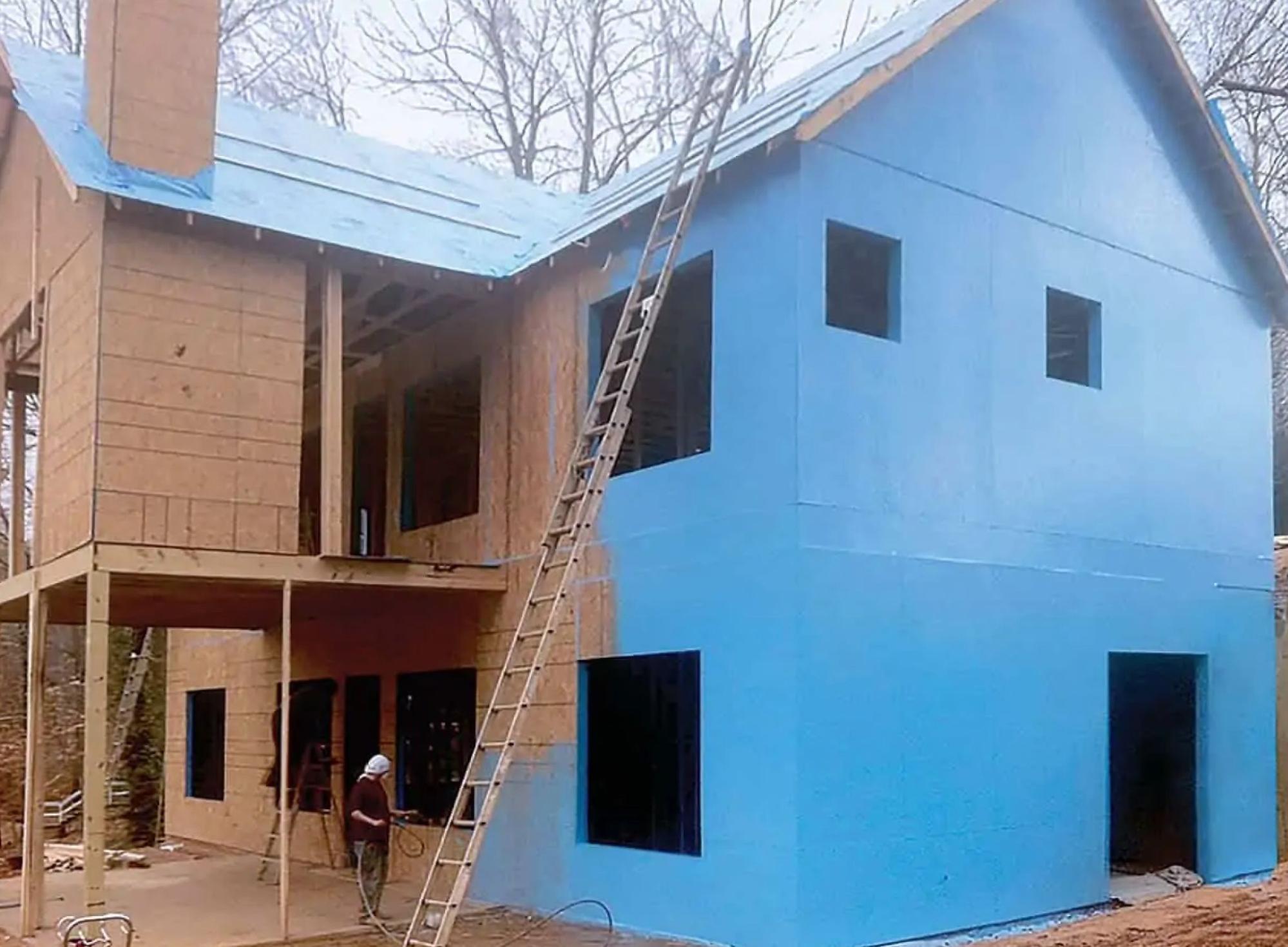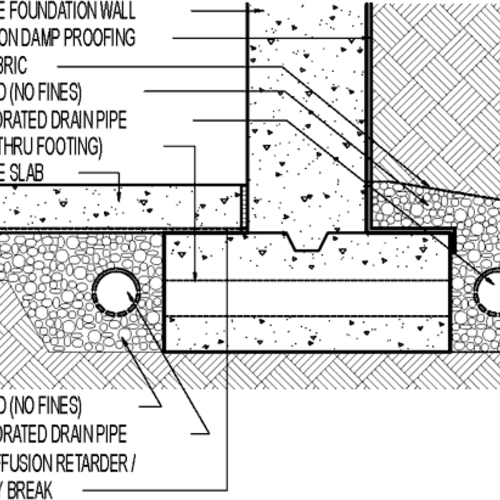How mould removal newcastle can protect your indoor air quality
How mould removal newcastle can protect your indoor air quality
Blog Article
Exploring the Numerous Strategies and Solutions for Effective Damp Proofing
Moisture in structures positions substantial challenges to both architectural integrity and interior air top quality. Different strategies and services have emerged to battle this prevalent problem. From typical damp-proof membranes to cutting-edge chemical treatments, each approach uses unique benefits. Understanding these alternatives is crucial for effective moisture control. Choosing the appropriate service depends on particular structure conditions and requirements, motivating additional expedition right into the most reliable wet proofing methods readily available.
Comprehending the Root Causes Of Moisture
Moisture can develop from different resources, recognizing these causes is important for efficient remediation. Commonly, dampness originates from 3 key sources: increasing wet, passing through wet, and condensation. Rising damp happens when groundwater travels up-wards with porous products, such as brick or rock, often as a result of an absence of a reliable obstacle (damp specialist newcastle). Permeating wet is typically created by external aspects, consisting of roof leaks, malfunctioning gutters, or damaged walls, permitting water to infiltrate a home. Condensation, on the various other hand, arises from excess dampness airborne, commonly aggravated by poor air flow and temperature distinctions, resulting in water beads forming on surfaces. Recognizing these underlying concerns is necessary, as each kind of wetness needs a customized approach for remediation. Proper assessment assists in figuring out one of the most efficient solutions, eventually securing the structural stability of a structure and enhancing indoor air high quality
Conventional Damp-Proof Membrane Layers

Chemical Damp-Proofing Solutions
Chemical damp-proofing services use a cutting-edge method to avoid dampness breach in structures. These techniques generally include the application of liquid chemicals that permeate stonework and form a barrier against increasing moist. Frequently used chemicals include silanes, siloxanes, and various other water-repellent representatives that respond with surface materials to create a hydrophobic layer.The application process normally needs exploration holes into the wall surfaces, injecting the chemical option, and allowing it to heal. This approach is especially beneficial for older frameworks where typical damp-proof membrane layers might be unwise. Chemical damp-proofing can be less turbulent and a lot more cost-effective than substantial improvement projects.While efficient, these services depend on correct application and ecological problems for peak efficiency. mould removal newcastle. Normal upkeep and surveillance are crucial to assure the long life of the damp-proofing therapy. Overall, chemical damp-proofing stands for a flexible choice for protecting buildings versus moisture-related damage
Cavity Wall Building And Construction Strategies
Cavity wall surface construction strategies use countless benefits, specifically in moisture control and energy efficiency. By including an air gap in between two layers of masonry, these wall surfaces efficiently mitigate water access while enhancing insulation. This combination not only secures structures from wetness but also adds to reduced energy consumption.
Benefits of Tooth Cavity Wall Surfaces
When considering effective moist proofing approaches, the advantages of dental caries walls stand out plainly. Cavity wall surfaces include two different layers, producing an air gap that effectively minimizes wetness infiltration. This layout decreases the danger of moisture, as the external wall works as a barrier versus rainfall and water access. In addition, tooth cavity wall surfaces boost thermal insulation, which adds to power efficiency by decreasing warmth loss. They also offer audio insulation, aiding to create a quieter indoor environment. Additionally, the air void enables air flow, which aids in moisture control and lowers the probability of mold and mildew growth. These advantages not only boost the general convenience of a building however likewise add to its durability and architectural stability.
Dampness Control Methods
Effective moisture control approaches are vital in dental caries wall surface building and construction to guarantee lasting protection versus wetness. One main approach includes the unification of weep openings, which assist in water drainage from the cavity, protecting against buildup. Additionally, using breathable membranes can aid manage moisture degrees while allowing entraped vapor to leave. Appropriate placement of insulation is additionally vital, as it needs to not block water drainage courses. Furthermore, making sure that the external leaves of the cavity wall are created with waterproof materials improves general durability. Normal maintenance checks are essential to recognize any blockages or damage early, protecting the structure's stability. Eventually, a mix of these strategies forms a durable defense versus wetness breach in cavity walls.
Insulation and Power Efficiency
Insulation plays an essential role in improving power effectiveness within tooth cavity wall surface construction. By including insulating materials, these wall surfaces develop a thermal barrier that decreases warm loss and minimizes power consumption. Efficient insulation not just assists preserve a stable indoor temperature however likewise alleviates the danger of wetness, as it avoids condensation within the wall surface cavity. Different strategies, such as the usage of inflexible foam boards or mineral wool, can be used to attain excellent insulation performance. Additionally, appropriate installment is vital to ensure that voids and voids are lessened, which can otherwise endanger energy effectiveness. Eventually, a well-insulated dental caries wall surface contributes considerably to overall sustainability and reduces cooling and heating costs for homeowners.
External Damp Proofing Approaches
Outside wet proofing techniques are necessary for shielding structures from moisture seepage. 2 effective strategies consist of the application of water-proof membranes and the installation of French drains. These services aid alleviate water buildup and protect the integrity of buildings.
Waterproof Membrane Application
While various techniques exist for preventing moisture access, the application of waterproof membranes stays a highly reliable exterior moist proofing technique. These membrane layers are usually made from materials such as polyethylene, rubber, or changed bitumen, providing a durable obstacle versus water infiltration. The setup procedure entails using the membrane layer to the outside surfaces of wall surfaces or structures, guaranteeing complete insurance coverage to avoid leakages. Appropriate adhesion and securing at joints are essential to taking full advantage of performance. Water resistant membrane layers can be used in various kinds, including liquid finishings and sheet membranes, permitting flexibility based on the details needs of the structure. This technique not just secures buildings from wetness but likewise enhances their longevity and structural integrity.
French Drain Setup
One reliable approach for managing groundwater and stopping moisture accumulation around a building's foundation is the installation of a French drainpipe. This drainage system is composed of a trench full of crushed rock and a perforated pipeline that redirects surface area water far from the foundation. Proper installment requires careful preparation, ensuring that the drain slopes away from the structure to promote optimal water flow. Furthermore, the place of the drain is important; it must be positioned in areas prone to pooling or excess moisture. Regular upkeep, consisting of clearing up debris from the crushed rock and guaranteeing the pipeline continues to be unobstructed, is crucial for long-term efficiency. Eventually, a well-installed French drainpipe can substantially decrease the danger of water-related concerns in structures and cellars.
Inside Waterproofing Methods
Inside waterproofing techniques are essential for protecting a building's inside from wetness seepage and possible water damages. These techniques usually involve the application of customized materials and methods made to create a moisture barrier within the framework. One common method is using water-proof coverings or sealants on walls and floorings, which stop wetness from penetrating surfaces.Additionally, installing indoor drainage systems, such as sump pumps, can successfully take care of water buildup in cellars and creep spaces. An additional method includes using vapor barriers, which are set up to prevent wetness movement from the ground into living spaces.Moreover, attending to any kind of splits or gaps in wall surfaces or structures with appropriate sealants assures an extensive protection versus water intrusion. By implementing these interior waterproofing methods, homeowner can significantly lower the risk of mold and mildew growth, architectural damages, and other moisture-related issues. Proper implementation of these methods is vital for long-lasting protection and website structure integrity.
Normal Maintenance and Examination Practices
Normal maintenance and inspection practices are essential for assuring the lasting effectiveness of wet proofing solutions in any structure. Regular checks allow residential property owners to recognize very early indicators of dampness invasion, such as peeling off paint, mold growth, and stuffy odors. These signs can indicate underlying concerns that call for immediate attention.Inspections must be conducted at least each year, concentrating on susceptible locations like basements, crawl areas, and outside walls. During these evaluations, building owners ought to examine sealers, drain systems, and air flow to validate they operate correctly.Additionally, maintaining seamless gutters and downspouts is important, as blocked systems can cause water build-up near the foundation. Implementing a regular maintenance schedule, along with prompt repairs, can significantly expand the life-span of moist proofing measures and protect the structural integrity of the structure. Proactive measures eventually add to the overall health and safety of the living atmosphere.
Often Asked Concerns
How Much Time Does Damp Proofing Commonly Last?
The period of moist proofing efficiency differs, commonly lasting between 20 to 50 years. Elements such as application high quality, environmental problems, and maintenance methods substantially affect the longevity of the moist proofing treatment.

Can I Damp Proof My Home Myself?
The private contemplated the expediency of DIY damp proofing. With proper study and the right materials, it is feasible. They additionally acknowledged the significance of professional assistance to assure long-lasting performance and avoid future concerns.
What Are the Indicators of Ineffective Damp Proofing?
Indicators of inadequate wet proofing consist of consistent mildewy odors, noticeable mold and mildew growth, peeling paint, damp spots on walls, and timber degeneration - mould removal newcastle. House owners need to resolve these issues promptly to stop additional damage and health issues
Does Damp Proofing Affect Indoor Air Quality?

How Much Does Specialist Damp Proofing Expense?
Professional moist proofing expenses vary substantially, commonly ranging from $1,000 to $5,000 relying on the residential or commercial property's dimension, the degree of the wet problem, and picked methods. Each situation requires a tailored evaluation for exact prices. Commonly, dampness originates from three main resources: rising wet, penetrating wet, and condensation. When considering reliable damp proofing approaches, the advantages of dental caries wall surfaces stand out plainly. Exterior wet proofing techniques are important for protecting frameworks from moisture seepage. While numerous methods exist for avoiding moisture access, the application of water resistant membrane layers continues to be a highly efficient external damp proofing technique. Indications of inefficient wet proofing include persistent mildewy odors, visible mold development, peeling paint, moist patches on walls, and wood degeneration.
Report this page